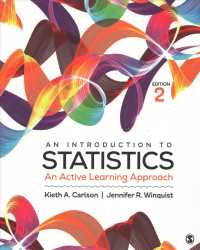Full Description
This accessible, practitioner-focused textbook details a comprehensive classroom behavior management framework that is easy to understand and implement within a K-12 classroom. Influenced by decades of classroom teaching and special education teacher candidate preparation experiences, the book features effective evidence-based strategies designed to both prevent problem behaviors from occurring in classrooms and address challenging behaviors that presently exist or may arise.
Each of the book's four sections show readers step-by-step how to develop, implement, and evaluate a personalized behavior management plan that best meets the unique needs of their classrooms which can vary tremendously in both size and types of students served. From the first page to the last, this new text addresses the reader in a friendly, personal way in an effort to enhance accessibility and encourage them to want to understand the "what and how" of each strategy and/or process and how it relates to the overall behavioral framework laid out in section one.
Ideal for both current and prospective special educators, this book supports readers in developing their own comprehensive approach to classroom behavior management that can be implemented across grade levels.
Contents
Section I Preventing Problem Behaviors from Occurring 1 Creating a Positive Learning Environment 2 Legal Considerations for Disciplining Students With Disabilities 3 Preventive Measures: Incorporating Effective Educational Practices Into Your Classroom Section II Addressing Problem Behaviors 4 Using Positive Behavior Interventions in Your Classroom 5 Effective Ways to Address More Challenging Student Behaviors Section III Dealing with Serious Problem Behaviors 6 Identifying the Function of Problem Behaviors 7 How to Manage Aggressive Behavior Safely Section IV Other Factors and Considerations 8 Working as Part of a Team 9 Challenges and Tips for Working With Special Disability Populations 10 Considerations for Working in an Early Childhood Setting 11 Increased Use of Psychotropic Medications to Manage Behavior 12 Best Practices for Dealing with Bullying and the Increasing Threat of Cyberbullying 13 Assessing Problem Behaviors 14 Avoiding Problematic and Abusive Disciplinary Practices Appendix A: Data Collection Forms







